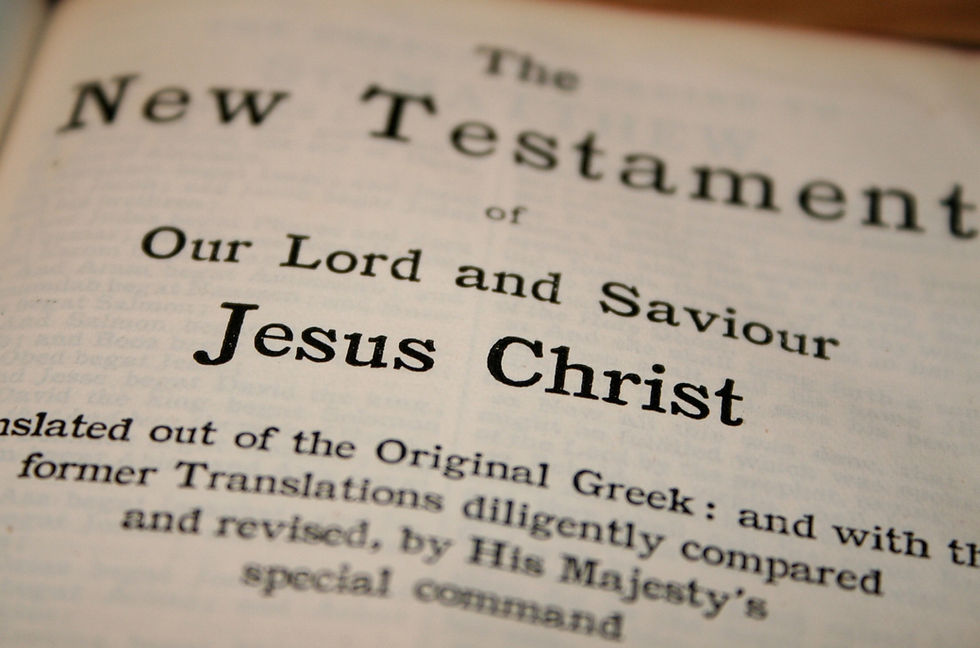Genesis 3:15 - Part 1: Introduction
- Carlos Augusto S. da Fonseca
- May 13, 2021
- 3 min read

And I will put enmity between you and the woman, and between your seed and her seed; it shall bruise your head, and you shall bruise his heel. Gênesis 3:15
The Language of God.
God speaks in many ways (Hebrews 1:1). One of the languages used by God is a kind of prophecy that is enunciated through metaphors and parables.
For example, in Isaiah 20:1-4, the prophet walks for three years naked and barefoot as a sign of a prophecy against Ethiopia and Egypt, as that would be what would happen to the men of those countries when the king of Assyria took them captive.
In Ezekiel 4:1-17 God commands the prophet Ezekiel to prophesy to the people and to use elements of everyday life as figures of the reality that was about to happen. For example, the prophet built a model that demonstrated the siege that would take place against Jerusalem; in that same prophecy, to speak of the many years relating to what was said of Israel and Judah, he remained tied and lying for many days; each day represented a year.
In Ezekiel 24:15-24,27 God sends the prophet Ezekiel to speak to the people in parables and to use as figures some objects and some normal, day-to-day, and other abnormal actions. In that same chapter Ezekiel lost his wife but did not mourn, as a sign of the prophecy. The men of the people wanted to know the meaning of all that, and then Ezekiel delivered the message from God to them.
The purpose of those prophecies was for people to repent of their sins, because everything that was about to happen was a consequence of their wickedness.
Some false prophets even imitated this type of language, as in 1 Kings 22: 10-14.
We also have as an example the tabernacle, the Levitical priesthood, the law and sacrifices. All of these are elements of the real life of the Jews in historical times, but they were transitory and only figures of the spiritual reality in Christ, as it is read in the letter to the Hebrews.
In the New Testament there are many examples of parables and metaphors spoken by Jesus. The apostle Paul also used many metaphors in his letters. In the rest of the Old Testament there are also parables and metaphors, but in the present post we highlight above some biblical passages in which the earthly element is not only spoken, but placed concretely and lived by the prophets before the listeners and witnesses of the prophecy.
Why does God use this language?
Because of its importance to the listeners' lives, the message should be remembered and retransmitted. Therefore, one of the reasons for using such language is that the association of God's message with elements known from day to day by the people makes it more practical in its transmission in the breasts of families; this association is also a mnemonic strategy, that is, a way of making sure that the message is not forgotten over time, because both the mental image and the daily view of objects and facts in everyday life remind us the received message
The Prophetic Message from Genesis 3:15
The text of Genesis 3:15 uses real and earthly situations and facts, such as the serpent, the serpent's treacherous bite, the fact that men beat her to the head, the descendant of the woman, etc.
Although it contains only earthly elements in its terms, the message of this text must be understood through the symbolic meanings behind these elements. They are used as a metaphor or parable for the transmission of the prophetic message.
Let's look at the verse:
And I will put enmity between you and the woman, and between your seed and her seed; it will hurt your head, and you will hurt its heel.
The message is composed of three parts, according to the division of the verse, below:
First part: And I will put enmity between you and the woman,
Second part: and (I will put enmity) between your seed and its seed;
Third part: this (the woman's seed) will hurt your head, and you will hurt her heel.
The text is a prophetic parable that speaks, in the first place, of the promised victory to Adam and Eve and their descendants in relation to the fall that all mankind suffered because of their decision. This victory would come through his descendant. It also speaks of the spiritual war that would take place until the promised descendant came and of the difficulties suffered by men until the final victory.
We will see in next posts that the descendant is Jesus Christ, the Savior of humanity, and that this text is equivalent to the Gospel message.
We will also see that the figure of the serpent refers to the tempter and that the greatest spiritual battle will take place during the Great Tribulation period, when the Savior will come as Judge and will imprison Satan with chains.
BIBLIOGRAPHY
American King James Version Bible. <https://www.bibliaonline.com.br/akjv/index >
Consulted on 05/11/2021.



Comments